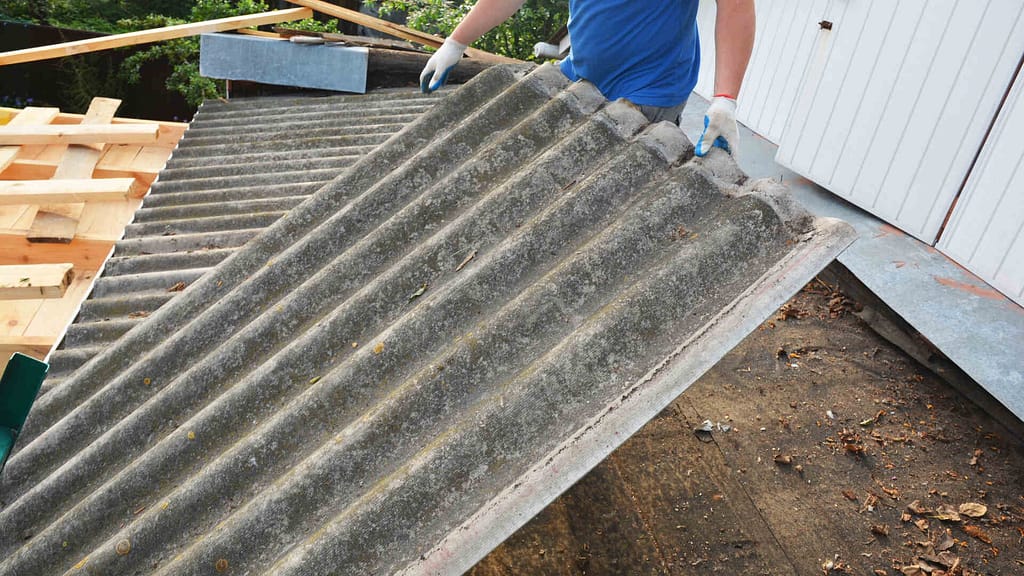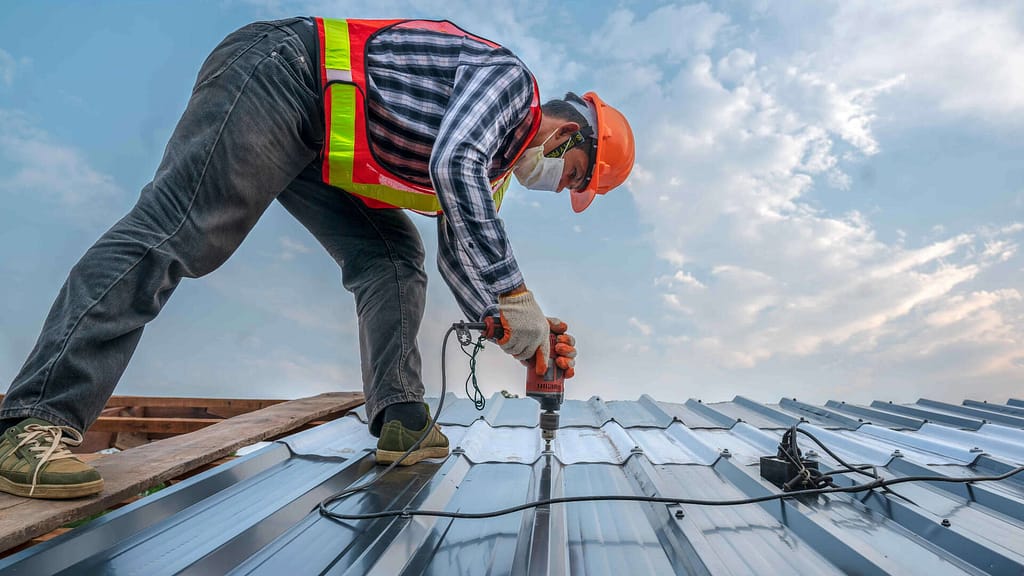It varies from days to a week, depending on size, complexity, materials used, weather, and crew expertise. Larger, complex roofs with premium materials need more time, while simpler ones are quicker.
Table of contents
Factors Influencing Roof Replacement Time

Different things can affect how long it takes to replace a roof. Hiring professional roofers or doing it yourself, how big and complex your roof is, the materials you choose, and the current weather conditions. Each of these factors plays a role in the overall timeline for your roof replacement.
Professional Vs. DIY

Choosing a skilled professional roofing company is a key factor in getting your roof replaced in just one day. These companies usually have years of experience and are equipped with teams that can do the job quickly and with high quality.
On the other hand, if you try to do it yourself or hire someone who isn’t a professional roofer, like a local handyman, the job could take much longer, maybe even close to a month. Doing the work alone or with just one other person can really slow down the whole process.
While you might think you’re saving money by doing it yourself, remember that professional roofing companies offer warranties for their work. This means they stand by the quality of what they do. It’s usually better to pay once for a job done right than to spend more later fixing leaks or other problems that come up if the roof wasn’t installed by a professional. In the end, choosing a professional team can save you time, ensure quality, and give you peace of mind with a warranty.
Size and Complexity of the Roof

The first thing to consider is how big your roof is. The bigger the roof, the longer it will take to replace. But, there’s more to it than just size. A roof’s complexity includes things like the number of sides, cuts, angles, and how steep it is. The height of the roof matters too.
A roof with many sides, different angles, a chimney, and skylights will take a lot longer to replace than a simple roof with just two sides and a few openings. If the roof is on a taller building or is very steep, workers need to be extra careful, which slows down the work.
Roofing Materials Used
Architectural asphalt shingles are the most common choice for roofing, known for their quick installation since they come in strips. While there are various other roofing materials, each requires a different installation method. The time to replace a roof is heavily influenced by the material used. Asphalt roofs, being straightforward to install, typically have a shorter replacement time.
In contrast, more specialized materials such as metal, cedar shakes, and synthetic shingles demand more time, with some, like synthetic shingles, needing individual placement, thus extending the duration of the job.
Weather Conditions

When planning to replace your roof, watch out for the weather. It’s best to avoid rainy, snowy, or very hot or cold days. Your contractor might delay the project if bad weather, like hail, happens on the planned day. Rain can also stop the work. Shingle roofs are especially sensitive to harsh weather. Autumn is the best time to get a roof replacement cost in Georgia. This season offers dry weather, which is great for minimizing delays and reducing the chance of water damage during roof work.
You should also think about the temperature. On very hot days, the workers might slow down and take more breaks to drink water. Extreme hot or cold temperatures can affect how well the roof is installed, depending on what the materials’ makers say.
Replacement Methods
The time it takes to replace your roof can also change based on the method your contractor chooses. There are two main ways to do this: the tear-off method and the overlay method. The type of roofing material you have often decides which method is better.
In the tear-off method, the workers remove the old, damaged parts of your roof before putting on new ones. Overlaying is different. Here, the contractor puts new shingles right on top of the old, damaged ones. This way is usually cheaper and faster than the tear-off method. But, the downside is that overlaying might just hide the problems without really fixing them. Plus, it might make your warranty from the shingle manufacturer invalid.
Understanding and Managing Delays in Roof Replacement
When replacing a roof, it’s important to be prepared for unforeseen delays. These can happen due to various reasons, and knowing how to handle them can save you both time and stress.
- Weather-Related Delays: Weather is unpredictable and can significantly impact roofing projects. If bad weather hits, be patient and understand that work may need to pause for safety. Your roofing contractor should resume work as soon as conditions improve.
- Material Availability: Sometimes, there might be a delay in getting the needed materials. This could be due to supply chain issues or specific material demands. Stay in contact with your contractor for updates and consider flexible material choices if necessary.
- Unforeseen Roof Damage: Once the old roof is removed, hidden damages might be discovered, requiring additional repair work. This can extend the timeline. Trust your contractor’s expertise in handling these issues effectively.
- Permit and Inspection Delays: Sometimes, waiting for permits or inspections can slow down the process. Ensure your contractor has managed these administrative tasks beforehand to minimize such delays.
Managing Delays
When getting your roof replaced, it’s important to know how to deal with any unexpected delays. Keep in touch with your roofing contractor regularly. Ask them for the latest news and how long they think the work will take. It’s a good idea to have a backup plan ready, especially if the work takes longer than expected and affects where you live. Be ready to make changes if needed, like using different materials or picking new days for the work.
Also, check your contract to see what it says about delays and how they’re handled. Understanding and being ready for these delays can help make the whole roof replacement go more smoothly. Remember, doing a good job can take time, so having some patience can really pay off.
Conclusion
To wrap up, the time it takes to replace a roof depends on many things like how big and complex the roof is, what materials are used, the weather, and how skilled the roofing team is. Choosing a professional roofer is often the best bet. They work faster and offer guarantees for their work, unlike doing it yourself or hiring someone less experienced.
It’s also important to know that sometimes things can delay the roofing job. Bad weather, waiting for materials, finding unexpected damage, or needing permits can all slow things down. Keeping in touch with your roofer, being ready for changes, and having a plan if things take longer are good ideas. Remember, even if it takes a bit longer, getting your roof done right is worth it. A good roof keeps your home safe and can even make it worth more.
Fact checked by Adrian Catalico – 1/25/2024
